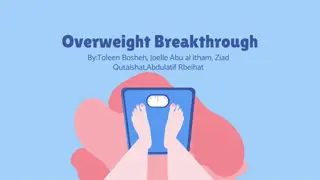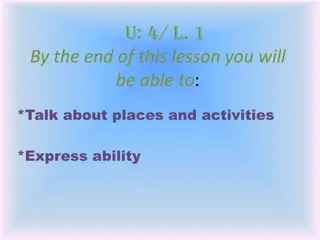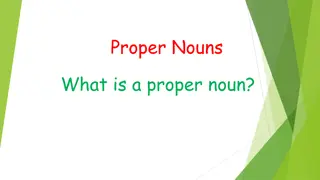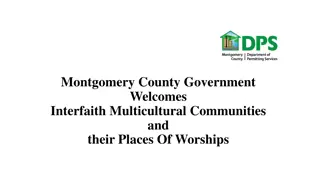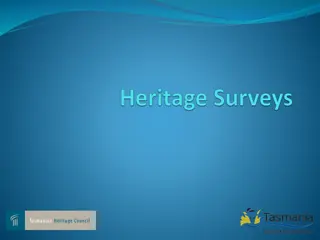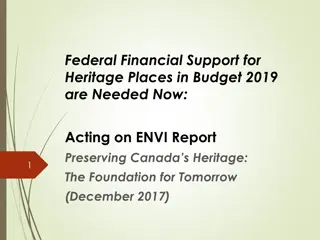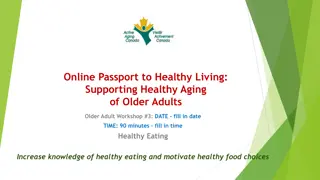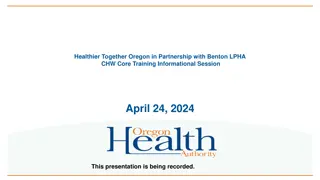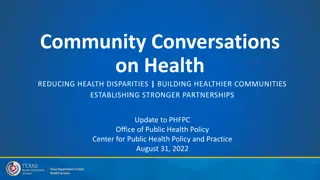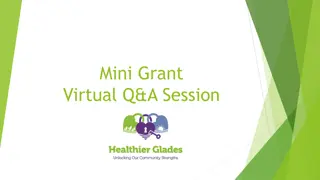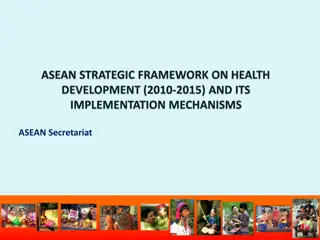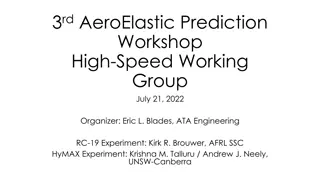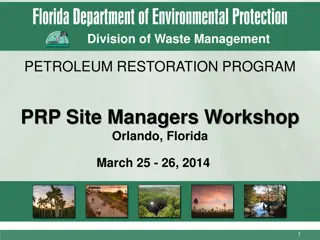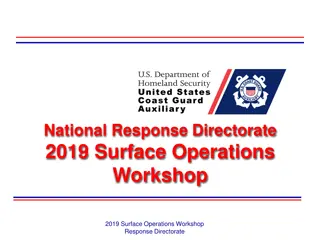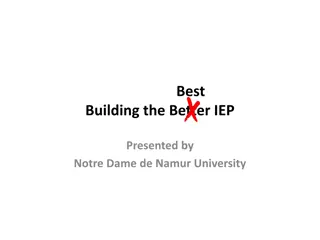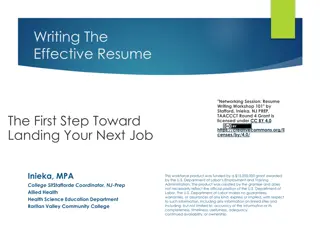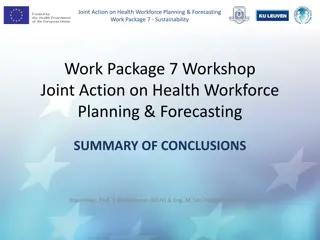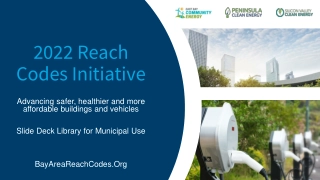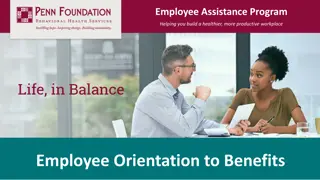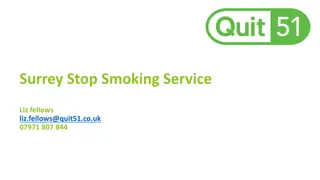Creating Healthier Places Workshop Overview
The presentation provides a template for a workshop focusing on creating healthier places. It includes sections on setting the scene, discussing big questions, and prioritizing solutions. The workshop aims to engage participants in identifying issues, working with data, and co-designing actions to promote healthy living in their neighborhoods.
Download Presentation

Please find below an Image/Link to download the presentation.
The content on the website is provided AS IS for your information and personal use only. It may not be sold, licensed, or shared on other websites without obtaining consent from the author. Download presentation by click this link. If you encounter any issues during the download, it is possible that the publisher has removed the file from their server.
E N D
Presentation Transcript
Instructions for use This presentation provides you with a template that you can edit to suit your specific workshop needs. You may find that the format changes when you download it whilst we have tried our best to design the template to avoid this it can happen if it does simply highlight the sections reduce the size of the font. We have made suggestions throughout the presentation make sure you delete our suggestions /text before using the template You can use the slides to help you work through the different phases of the workshop.
We would like to acknowledge and pay our respects to the Traditional Owners and Elders past, present and emerging of the lands and waters on which [insert location] is located. And, to the Traditional Owners and Elders of the lands and waters wherever you are all located today. [Please replace and/or insert your own text here]
Section 1 Welcome and setting the scene 4
The big question for today. Image How can we create healthier places together? 5
So far you have 1. Learned about what makes a healthier place [cue animation ] 2. Audited your local neighbourhoods And today . 6
In todays workshop 1. We want to find out more about your data and the places that you live 2. We want to hear from you what the big issues are and how they impact on healthy eating, being active and feeling safe in their neighbourhoods 3. We want you to prioritise and co-design solutions that will address help the big issues so that we can include your ideas in our council planning 7
Overview of our workshop 1. Welcome and setting the scene 2. Sharing kids data 3. Understanding healthy places working with data 4. Connecting the dots 5. Identifying priorities 6. Co-designing actions that will help create healthier places 7. Closing the workshop
2. Sharing the data This is a summary of what you told us . [ duplicate the slides and insert either graphs/charts or a summary of the main issues from your audits you could include photos kids submitted/watch any animations/digital stories You could also engage kids with data via a gallery walk]
Section 3 Unpacking the data
In this part of the workshop we are going to spend time unpacking the data . We want to find out more about the data we have collected from kids. Your ideas will help us all understand the data better and help us plan better solutions.
Unpacking the data activity At your tables you should have a set of cards; and a poster with the themes healthy eating, being active and feeling safe
Unpacking the data activity In your groups your task is to; 1. Decide what theme each card belongs to 2. Place it on the poster (use blue tak to stick it to the poster) 3. Spend time talking about each card and how it relates to healthy eating, being active and/or feeling safe 4. Make sure someone in your group is taking notes and writing them down on the poster next to the card you are discussing 5. Are there any other issues that you think are missing from the cards that need to be included? Make a new card and stick it on the poster.
In this part of the workshop we are going to spend time seeing whether we can make any links across the cards and themes. For example Being Active Public toilets Feeling Safe
Connecting the dots activity Looking at the different cards on the posters, can you identify cards that might connect to other themes Using the string/wool you have at your table create a link between the cards As you make links explain them to the group Are there any other links? If so use wool/string to make the connections
In this activity you will have a chance to vote on the issues you think are most important for us to address. 1. Spend time looking at the different factors on each of the posters. 2. Using the stickers you have been provided with, place a sticker (or stickers) next to the issues that you feel are the most important ones that need to be fixed 3. Count up the votes and make a list of the top priority issues according to your group.
5. Co-designing actions for creating healthy places 19
Action ideas For each of the priorities listed your group needs to come up with an action idea that would make neighbourhoods healthier places For each action idea your group needs to be able to provide a description of how and why their idea would contribute to their neighbourhood being a healthier place. * Use the butchers paper provided to record ideas and notes Each group will be asked to share their ideas with the whole group. Make sure you record you priority issue and action ideas on the poster provided 20
In closing the workshop recap on what kids have done today and their main suggestions. Also include timelines for planning, how you will inform kids about the process and outcomes You may like get kids to fill in an evaluation form (if you have one) and/or ask them to write some reflections. You could ask them to reflect on the following: What did you learn about local government during this project? What did you learn about healthy places during this project? What was your favorite part of being involved in the project? What changes would you most like to see happen in your neighbourhood?


